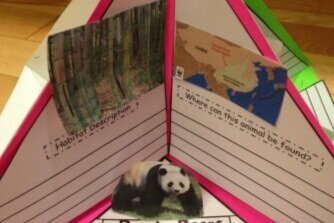Literacy
—
Literacy is the ability to read, view, write, design, speak and listen in a way that allows you to communicate effectively. The power of literacy lies not just in the ability to read and write, but rather in a person’s capacity to apply these skills to effectively connect, interpret and discern the intricacies of the world in which they live.
People in Our Community
By: Chong Xiong
LEVEL: K-2
TAGS: writing, publication, storytelling
People in our community play an important role to the culture. This unit takes a Writer’s Workshop approach where students learn about the importance of how and why ask questions to explore a topic in which information are provided by an expert in connection to the people in the community. This unit is to prep students to build upon a shared research unit where students go deeper into researching and writing an information text. However, to make learning successful, the unit will be taught using best practices and strategies from some well-known researchers.
Mini-book Publication with Hmong RPA
By: Choua Yang
LEVEL: K-2
TAGS: writing, publication
Learning the Hmong Roman Popular Alphabet can be fun through student mini-book publication of the mono-consonants. In this unit, you will have access to see student created mini-book publication and also the template for your students to write their own RPA alphabet mini-books.
MN Zoo Day
By: Youa Lee, See Yee Yang,
and See Pha Vang
LEVEL: K-9 through K-12
TAGS: animals, research, reading, writing
Language day at the zoo! Present the project to students by telling students what a language day at MN ZOO is about. Teach students how to research and gather information using these materials. This will be a 4 week scope of researching animals, translating images, displaying them, ending off the project with creating an activity and presentation.
Learning History Through Storytelling
By: Philip Thao
LEVEL: K-6 to K-8
TAGS: writing, publication, storytelling
Stories are powerful and with less than 3% of our Hmong elders in the United States living today, we must capture their perspectives before it’s too late. There is currently no United States History textbooks that includes the Hmong people and the Secret War Operation in Laos during the Vietnam War. Therefore, by conversing with Hmong elders in the community, organic history of the Hmong can evolve through storytelling giving students opportunity to interact with elders, create an authentic piece of text, and practice public speaking.
Write to a Penpal
By: Richard Hawj
LEVEL: K-4 through K-6
TAGS: writing, letters, penpals, literacy
Writing is a hard skill and usually the last one to be developed. Use penpals to practice writing in Hmong. This unit will outline the necessary parts of a letter.
Storytelling with
Our Families
By: Yer Thao
LEVEL: K-2
TAGS: Story telling, writing, publication
Stories are an important part of life. For thousands of years, the Hmong people told stories from one generation to another to keep their stories alive. People use stories to make sense of our world and to share their unique cultural differences. Stories are the signal within the noise. It is so powerful that we can see them even when they are not there. Storytelling is also a tool for students to connect their learning to their real life. Students will interview family members of their past to connect their learning with writing through storytelling.







